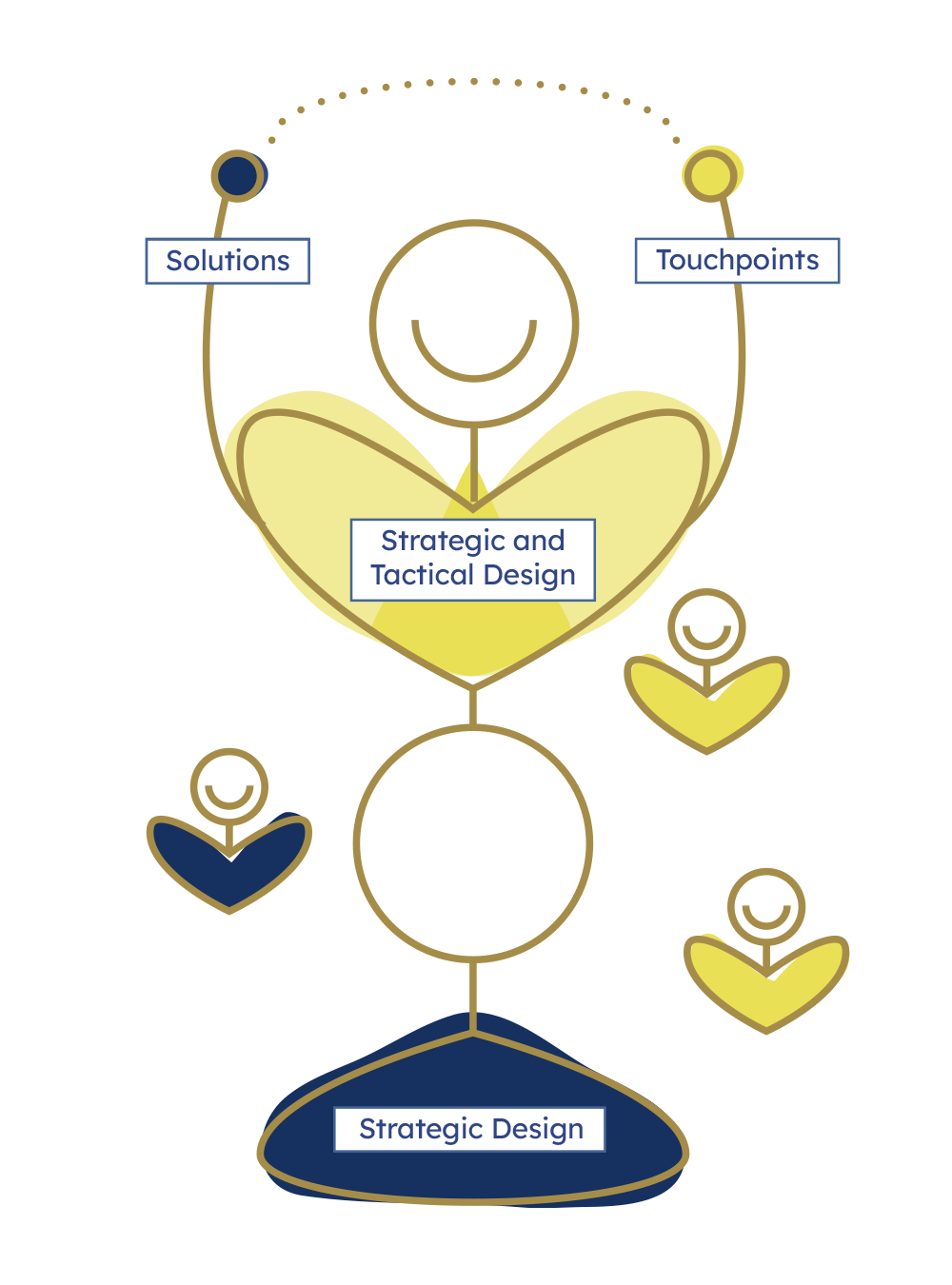Principles of strategic and tactical design
The principles which frame three design friends

Design is both a practice and a process
Design principles guide the work.
To bridge the gap between futures-thinking and on the ground actions, Kandure implements the three design practices of Human-Centred Design (HCD), Design Thinking and User Experience (UX) Design.
These three design friends enact processes which help to transform problems into possibilities, progress and potential. Together they actualise strategy, develop aligned strategic solutions and creatively craft tactical touchpoints.

Design Principles
The guiding aspects of strategic and tactical design
Strategic Design
- Human-Centred Design (HCD)
- Empathy and understanding
- Develops solutions
- Creates value
- Dialogues with brand
- Traits: informed, inclusive, inspired, innovative
- Qualities: sustainable, ethical, empowering
- Future-oriented: long-term considerations and future needs
- Strategically aligned with support from tactical design
- Ideates and innovatively transforms problems into possibilities, potential, and progress
- Leadership and management
- Reviewed for agency, currency and public value
- Once given life, can pivot or reshape, be redefined or updated
- Synthesises data and insights
- Is the story
Tactical Design
- Design Thinking and User Experience (UX) Design
- Creativity and helpfulness
- Delivers touchpoints
- Sparks desire
- Informed by and impacts brand
- Traits: approachable, accessible, adaptable, actionable
- Qualities: authentic, educational, engaging
- Present-focussed: short-term aims to meet a strategic context
- Aligns with and supports strategic design
- Creatively actualises strategy across multiple channels, interactions and experiences
- On the ground actions
- Crafted for awareness, improvements or results
- Once deployed, may be adapted, revitalised, reconfigured or retired
- Generates measurable data
- Tells the story
Design Practices
Three Friends
The three design practices of Human-Centred Design, Design Thinking and User Experience Design all rely on feedback mechanisms to ensure the best possible outcomes and outputs are designed.
Simple descriptions are given here to help you.
Kandure practises the three design practices and their associated processes. They are all friendly friends.
Human-Centred Design (HCD)
As a process, Human-Centred Design (HCD) is transformational. In practice, it is also community-centred as It maintains an empathetic focus on people and their interactions.
Centred on people, HCD helps clarify strategic objectives and goals, identify opportunities and encourage a more innovative mindset. It yields outcomes which are more authentic and aligned, which in turn helps to socialise and embed outputs.
HCD can be actioned in both a lean and comprehensive form. It can also accommodate complex stakeholder relationships or simple business structures, such as those with a single invested interest.
For its methodology, HCD has four key phases of discover, define, develop, and deliver which guide the process. All phases have empathy at the core.
Design Thinking
Design Thinking is a problem-solving approach which emphasises creativity.
Design Thinking is akin to HCD in that there is a process of discovery, but then it shifts more rapidly into the tactical activities of refine and define, draft or design, develop, and feedback mechanisms.
It is useful for the delivery of tactical projects where time is limited or where needs are more specific.
User Experience (UX) Design
User Experience (UX) Design focusses on the crafting of tactical touchpoints. Aesthetics, functionality, usability, mobility, accessibility and inclusion are the primary considerations.
Although actively practised for the design of products in the digital space (interfaces, transactions, interactions), UX Design is also useful to promote good design choices every day, everywhere.
Strategic and Tactical
The strategic and tactical design Kandure actions is universally suitable for any project, as it addresses capability or delivery issues and relevant problems.
Kandure specialises in projects for strategic engagement, communications and activations.
All projects inevitably have engagement, communication and activation components.